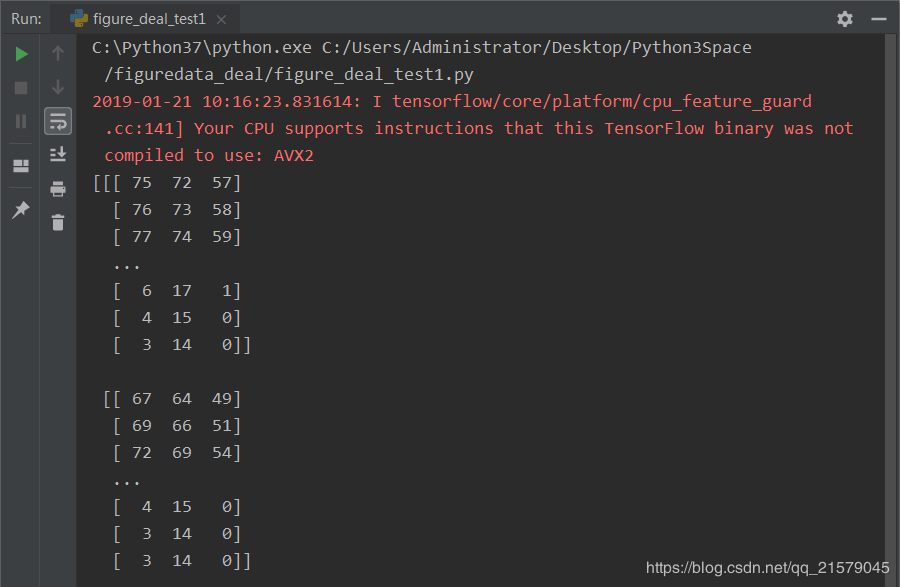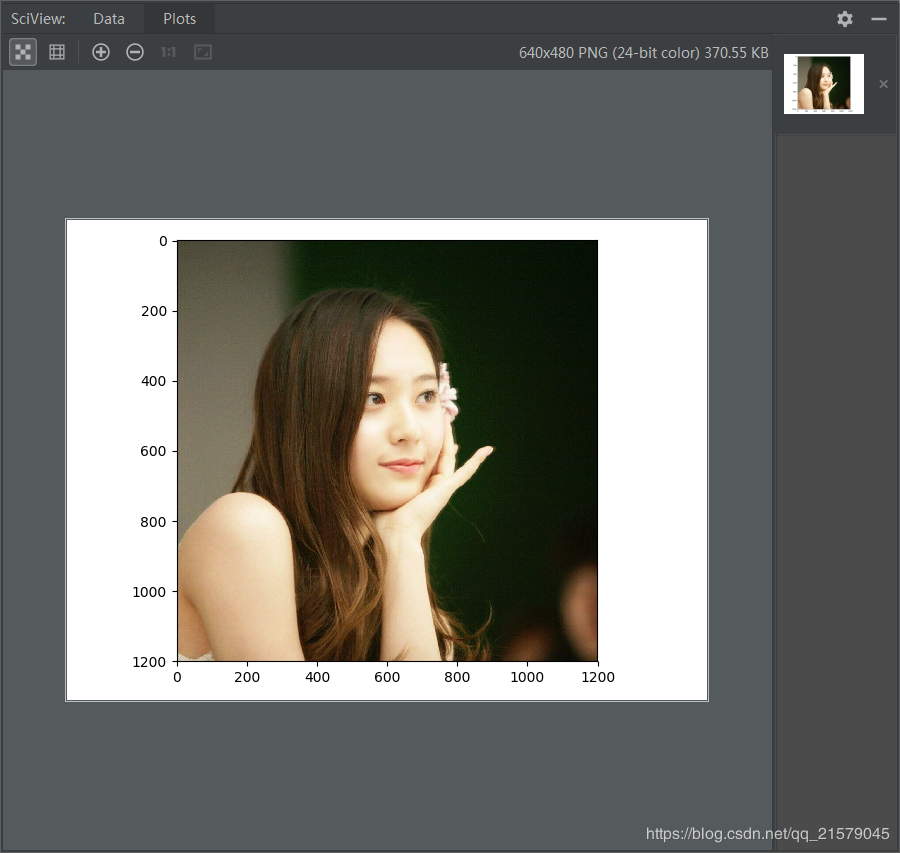参考书
《TensorFlow:实战Google深度学习框架》(第2版)
1. 图像编码处理
用TensorFlow对jpeg格式图像进行编码/解码。
#!/usr/bin/env python # -*- coding: UTF-8 -*- # coding=utf-8 """ @author: Li Tian @contact: 694317828@qq.com @software: pycharm @file: figure_deal_test1.py @time: 2019/1/21 10:06 @desc: 用TensorFlow对jpeg格式图像进行编码/解码 """ # matplotlib.puplot是一个python的画图工具。在这一节中使用这个工具来可视化经过TensorFlow处理的图像。 import matplotlib.pyplot as plt import tensorflow as tf # 读取图像的原始数据。 image_raw_data = tf.gfile.FastGFile('C:/Users/Administrator/Desktop/Python3Space/figuredata_deal/krystal.jpg', 'rb').read() with tf.Session() as sess: # 对图像进行jpeg的格式解码从而得到图相对应的三维矩阵。TensorFlow还提供了tf.image.decode_png函数对png格式的图像进行解码。 # 解码之后的结果为一个张量,在使用它的取值之前需要明确调用运行的过程。 img_data = tf.image.decode_jpeg(image_raw_data) print(img_data.eval()) # 使用pyplot工具可视化得到的图像。 plt.imshow(img_data.eval()) plt.show() # 将表示一张图像的三维矩阵重新按照jpeg格式编码并存入文件中,打开这张图像,可以得到和原始图像一样的图像。 encoded_image = tf.image.encode_jpeg(img_data) with tf.gfile.GFile('C:/Users/Administrator/Desktop/Python3Space/figuredata_deal/output', 'wb') as f: f.write(encoded_image.eval())
输出结果:

